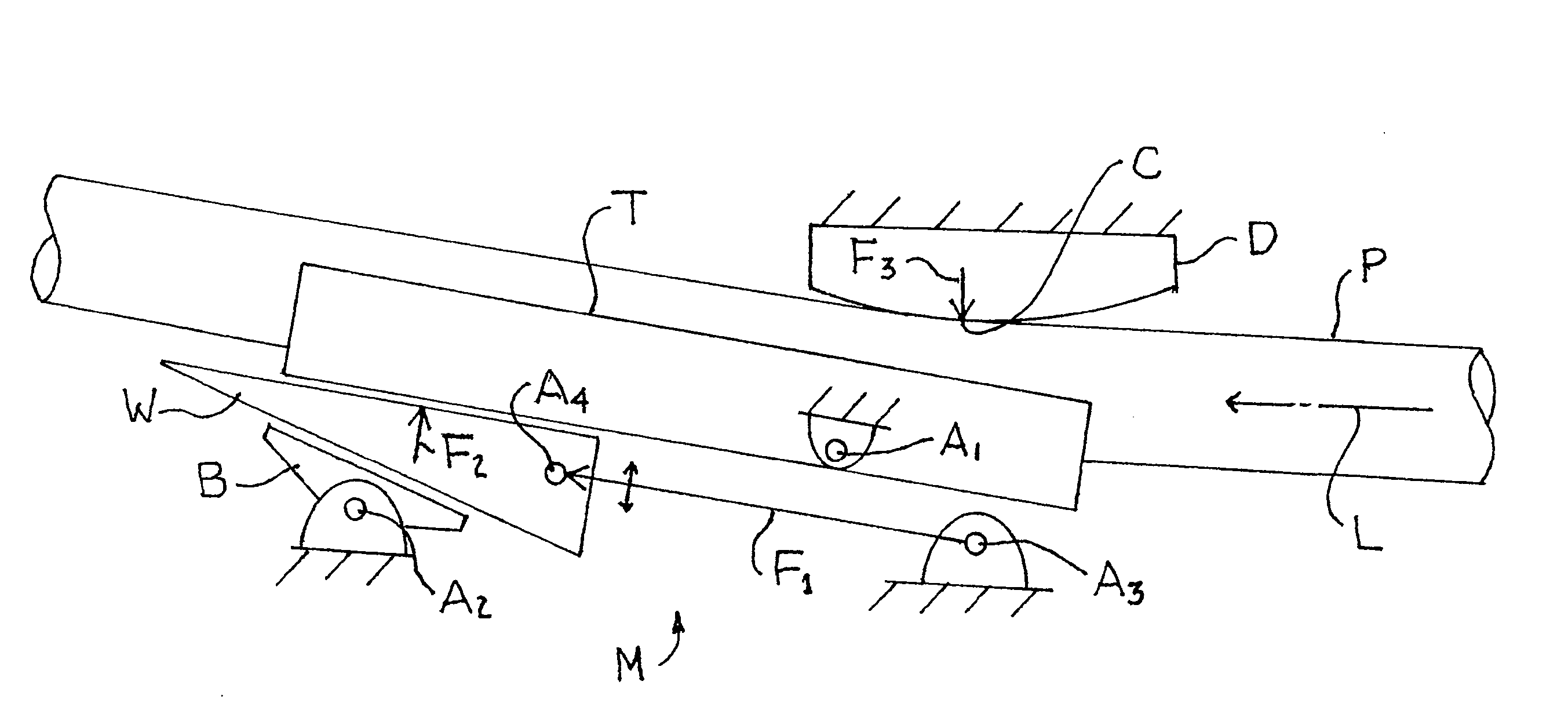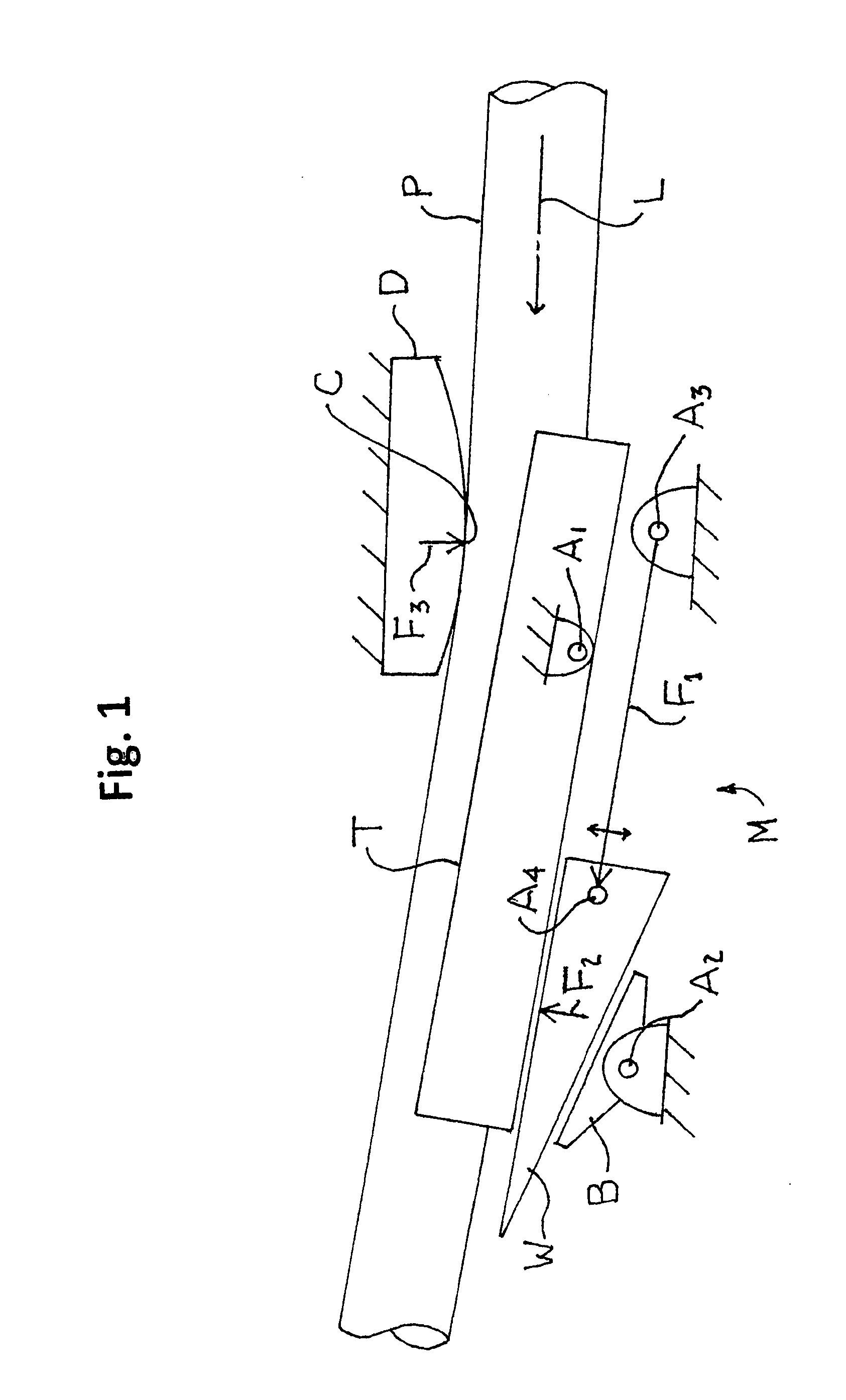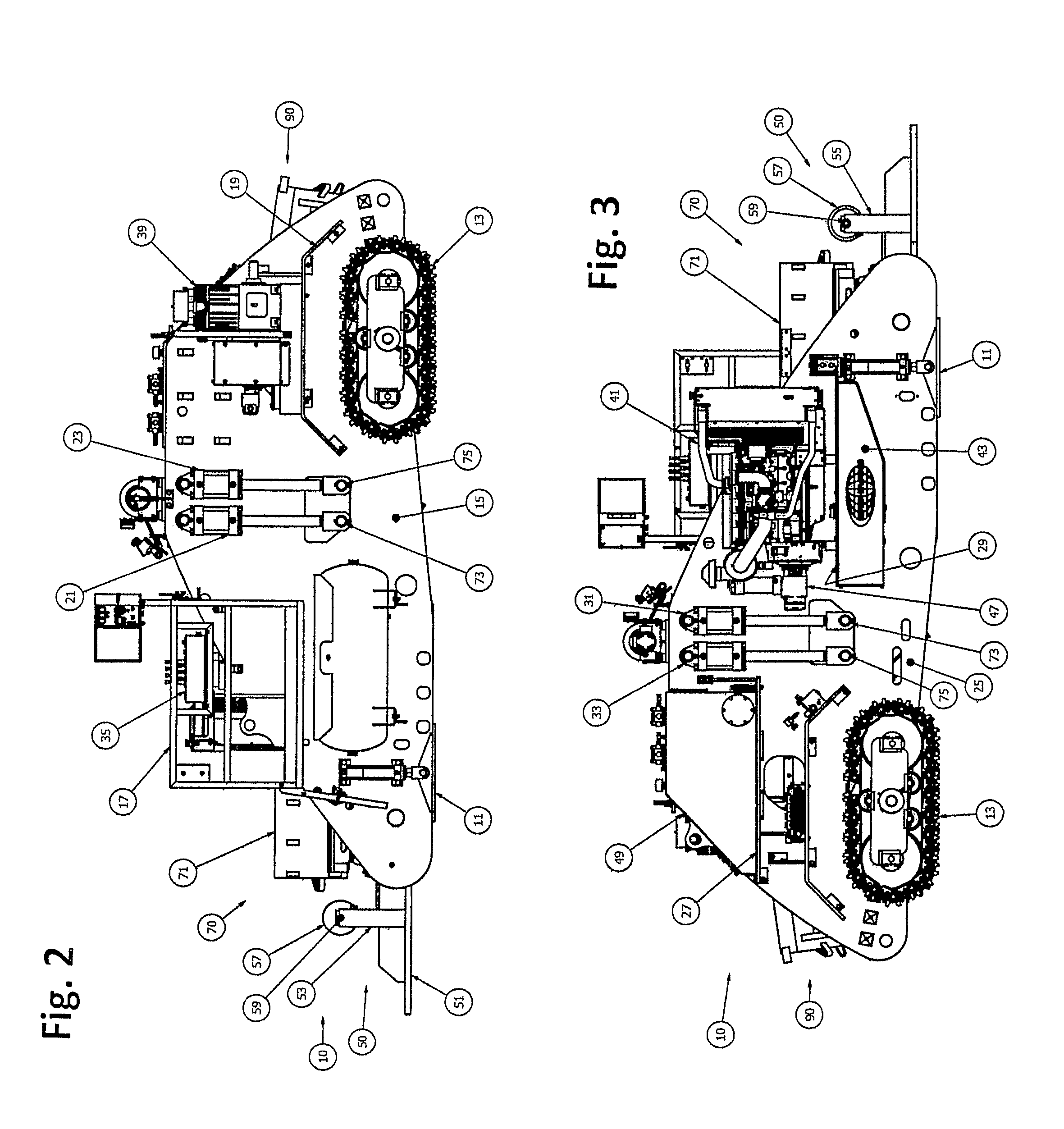Wedge driven pipe bending machine
a bending machine and bending pipe technology, applied in the field of pipe bending equipment, can solve the problems of plastic deformation of the pipe, impose serious limitations on the capabilities of the machine, and increase the likelihood of leakage and other defects in the operation of the cylinder, so as to reduce the required hydraulic force
- Summary
- Abstract
- Description
- Claims
- Application Information
AI Technical Summary
Benefits of technology
Problems solved by technology
Method used
Image
Examples
Embodiment Construction
[0032]Turning first to FIG. 1, the pipe P is to be bent against a die D. The pipe P will be advanced along its longitudinal axis L in a downstream direction in incremental steps past the die D. “Downstream direction” is relative and describes the movement of the pipe P in relation to the machine M. In practice, the machine M moves upstream in relation to the pipe P which is stationary. The pipe P is initially advanced to a position at which it can be rested in a trough T, commonly referred to as a stiff-back, which extends longitudinally downstream of the die D. The trough T is pivoted on a first axis A1, as shown on the upstream portion of the trough T below the die D but downstream of the anticipated contact point C of the pipe P with the die D. The downstream end of the trough T is supported by a wedge W which is supported by and reciprocally slides on a bed B which is pivoted on a second axis A2. When the pipe P is in the initial position, a wedge driving force F1 which is direc...
PUM
| Property | Measurement | Unit |
|---|---|---|
| force | aaaaa | aaaaa |
| plastic deformation | aaaaa | aaaaa |
| diameter | aaaaa | aaaaa |
Abstract
Description
Claims
Application Information
 Login to View More
Login to View More - R&D
- Intellectual Property
- Life Sciences
- Materials
- Tech Scout
- Unparalleled Data Quality
- Higher Quality Content
- 60% Fewer Hallucinations
Browse by: Latest US Patents, China's latest patents, Technical Efficacy Thesaurus, Application Domain, Technology Topic, Popular Technical Reports.
© 2025 PatSnap. All rights reserved.Legal|Privacy policy|Modern Slavery Act Transparency Statement|Sitemap|About US| Contact US: help@patsnap.com



